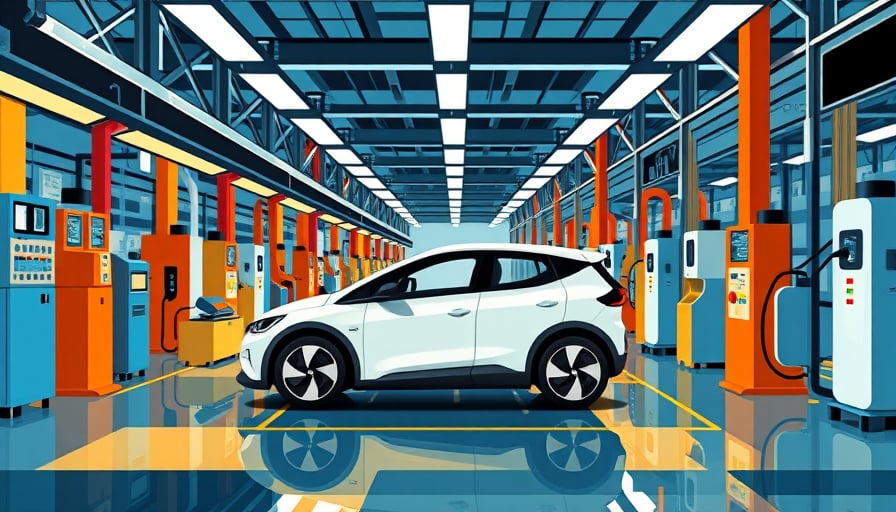Corporate News Report
The electric‑vehicle (EV) sector has entered a period of heightened volatility, yet certain firms continue to demonstrate resilience through strategic financing, technological differentiation, and a clear path to production. Rivian Automotive Inc. (NASDAQ: RIVN) exemplifies this phenomenon. Recent market activity shows a modest 1.56 % uptick in Rivian’s share price, and analysts remain bullish on its trajectory over the next 12 months.
Financing Strategy Ahead of Georgia Production
Rivian’s announcement to secure a $6.6 billion loan before the commencement of production at its Georgia manufacturing plant in 2028 is a noteworthy development. This capital structure is designed to bridge the gap between current cash burn and the capital intensity required for large‑scale production. By front‑loading liquidity, Rivian mitigates the risk of supply‑chain disruptions and positions itself to capitalize on anticipated demand growth once the vehicle lineup rolls out. The financing plan aligns with broader industry practices, where companies such as Tesla and Lucid Motors have similarly leveraged debt instruments to finance plant expansions.
Technological Differentiation and Brand Credibility
Rivian’s emphasis on advanced driver‑assist technology and in‑vehicle software has garnered external validation. An incident involving a Rivian owner’s onboard cameras successfully preventing a police misidentification illustrates the practical value of the company’s sensor suite. Moreover, a Volkswagen board member’s characterization of Rivian’s software as a “really good” start underscores the platform’s potential to compete with established OEMs. This technological credibility is critical in an era where consumer expectations for autonomous features are rapidly increasing.
Competitive Landscape and Market Dynamics
Despite these strengths, the broader EV market faces structural headwinds. Numerous automakers have issued forecasts of a sharp decline in sales, citing inventory glut, tightening consumer demand, and macroeconomic pressures such as higher interest rates. Volkswagen’s recent quarterly report—highlighting a net loss exceeding $1 billion—illustrates the financial strain even dominant legacy players are experiencing. Rivian’s competitive advantage therefore hinges on its ability to maintain a lean cost structure, secure a robust supply chain, and accelerate vehicle deliveries.
Implications for Investors
From a fundamental standpoint, Rivian’s recent stock movement reflects short‑term market sentiment rather than a fundamental shift in valuation. Analysts emphasize that the company’s projected profitability hinges on meeting production milestones and managing capital expenditures efficiently. While the loan facility provides a cushion, it also introduces debt service obligations that could pressure free‑cash‑flow metrics if sales targets are not met.
Investors should monitor:
- Production Milestones – On‑schedule delivery of the first production vehicles in Georgia.
- Debt Servicing Costs – Impact of interest payments on quarterly earnings.
- Regulatory Incentives – Availability of federal and state credits that may enhance vehicle appeal.
- Supply‑Chain Resilience – Securing battery cells and key components amid global shortages.
Broader Economic Context
Rivian’s trajectory mirrors a broader pattern where technology‑centric companies in mature industries are leveraging debt to accelerate innovation, thereby redefining competitive dynamics. This strategy is not limited to EVs; similar approaches are evident in aerospace, biotechnology, and digital infrastructure. The cross‑sector influence of these financial maneuvers underscores the importance of assessing not just sector‑specific risks but also macro‑economic factors such as monetary policy, commodity prices, and geopolitical stability.
In conclusion, while the EV sector confronts potential downturns, Rivian Automotive Inc. demonstrates a combination of strategic financing, technological advancement, and market positioning that may sustain its upward trajectory. The company’s ability to translate these assets into consistent production and sales will determine its long‑term competitiveness and deliverability to investors.
